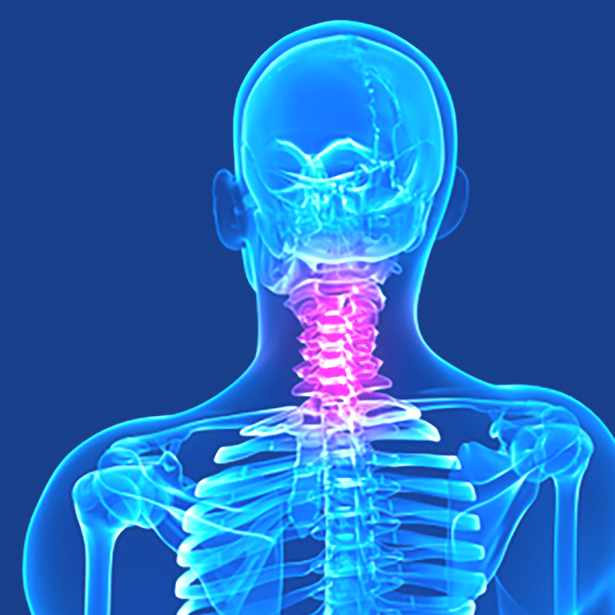
Our treatments provide pain relief for many varing conditions, including
Subluxation – Dislocated vertabrea often causing trapped/pinched nerves.
Osteoarthritis in the Lumbar Spine – Arthritis symptoms in the vertebrae
Postural Syndrome – Pain caused by poor posture
Cervical Facet Irritation – Irritations between the vertebrae
Cervical Facet Syndrome – Widespread pain around the neck, shoulders and upper back.
Subluxation
What is Subluxation?
Subluxation occurs when one or more of your vertebrae (bones in your spine) move out of position and irritate nerves or caused pinched nerves in your spine. Pinched nerves cause them to malfunction as they stop receiving signals from the brain. When the pinched nerve blocks a signal from the brain, it can affect all areas of the body and certain parts will stop functioning correctly.
Vertebral subluxation complex (VSC) is a condition you could have and not even be aware of. VSC may not elicit feelings of pain or discomfort in its initial stages, as pain does not always accompany a lack of function.
Let’s take a step back to see where this condition occurs. Touch the back of your neck to feel your cervical spine. This is the top of the spine, the part that connects with the brain. Beneath it is the thoracic spine, which makes up the mid back, and the lumbar spine, which makes up the low back. Vertebral subluxation complex (VSC) in the cervical spine occurs when the vertebrae in the neck lose their normal motion or position, which can lead to local inflammation and affect the delicate nerves in the spinal cord that carry messages between the brain and the rest of the body.
The brain and body communicate via messages that travel through these nerves, which are located along the entire length of the spine. These nerves, along with the brain, collectively make up the central nervous system. They exit the spinal column through holes formed by vertebral joints and send out an extensive network of branches that carry information to specific parts of the body, controlling the health and function of almost every cell, tissue and organ. Research suggests that subluxations affect how these body parts function by interfering with the brain-body communication system. Imagine a healthy nervous system surrounded by clean water, and the interference as muddy and murky water that starts to pollute it.
What causes Subluxation?
A variety of external and internal factors can cause subluxations. Trauma, toxins and emotional stress have been identified as the primary causes of subluxations. Traumatic causes include car accidents and falls; chemical toxins include alcohol, drugs and environmental pollutants; and emotional stress includes everyday problems like worrying and anxiety.
What are the symptoms of Subluxation?
Subluxation occurs in 5 distinct stages, outlined below;
The first stage is kinesiopathology, which begins when spinal joints become stuck, forcing the joints around them to work harder in order to compensate. Unfortunately, this compensation does not change the fact that the spinal joints aren’t functioning properly, and thus the spine’s normal curvature can distort and the stuck joint can contribute to nerve irritation. Most often, this occurs when malfunctioning spinal bones stretch, twist or pull nerve tissue.
When this is serious enough it can lead to neuropathology, the second stage of VSC, which can involve either extreme nerve irritation or a pinched nerve. Pinched nerves, which are quite rare, can produce feelings patients frequently describe as “pins and needles” or a numb sensation surrounding and away from the spine. Irritated nerves can also affect those parts of the body that they communicate with and increase a person’s susceptibility to disease.
This interference in the nervous system can lead to the third component of VSC, myopathology, which involves abnormal muscle function. With myopathology, nerve impulses can diminish to the point that they understimulate muscles, which causes them to weaken and atrophy, or become too strong and overstimulate muscles, which causes them to work too hard and tighten, and potentially go into spasm. This can lead to inflammation in muscles and joints, which can cause further complications by spreading to the rest of the soft tissues in the spine.
If that happens, it can lead to the fourth component of VSC, histopathology, which involves abnormal function of soft tissue. This occurs when abnormal spinal joint function diminishes blood supply and leads to long-term swelling of structures like ligaments, disks and other soft tissues.
If people don’t seek care during any of these stages, VSC can affect the whole body. This is pathophysiology, the fifth and final stage of VSC, when degenerative changes in the spine begin to spread. At this stage, calcium deposits may have built up, and are eventually recognizable as bone spurs and other abnormal growths. When this happens, your body has gone to the extreme of compensating for a malfunctioning or traumatized joint by actually creating a growth similar to new bone. It has slowly transformed immobile, untreated joints into solid blocks of calcium. This final component of VSC becomes more common as people get older.
While it takes many years for someone to develop problems associated with the final component of VSC, the condition can begin at any age. That’s why it’s important to visit your health care practitioner, as he or she can check for subluxations and provide you with optimal care.
What are the treatments for Subluxation?
There are a variety of treatments available for Subluxation, including chiropractic adjustments, spinal decompression and neuromuscular therapy. Each of these treatments will help to prevent the onset of Subluxation and also provide pain relief for individuals who suffer from the condition.
If you feel that you could benefit from these treatments or if you have further questions on Subluxation, please do not hesitate to call us and book an appointment today!
